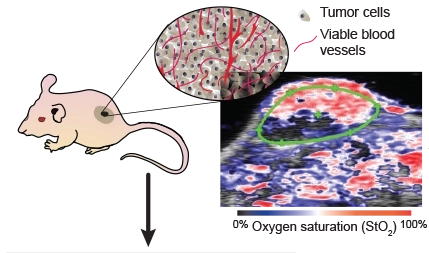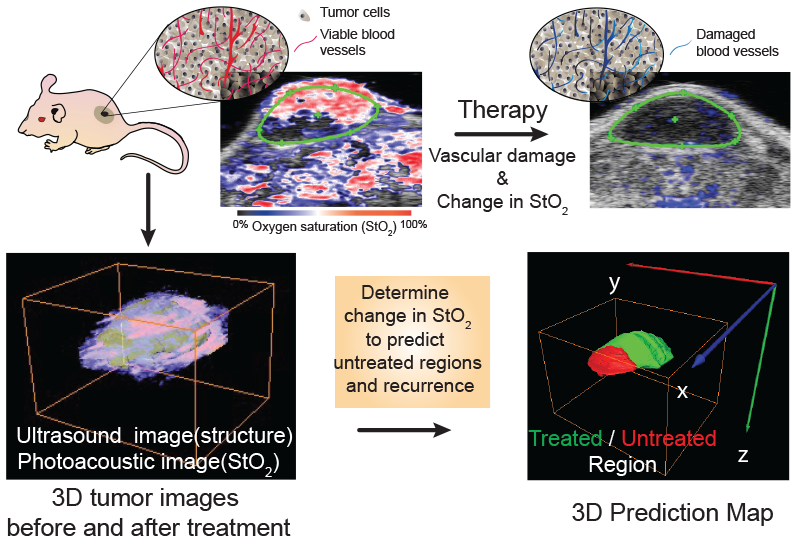
In this study, we show that mapping the change in blood oxygen saturation (StO2) with photodynamic therapy (PDT) within the 3D tumor volume could act as a surrogate marker to predict the likelihood of PDT success and could identify regions of local tumor recurrence within this 3D tumor volume. For the first time, photoacoustic Imaging (PAI) monitoring of benzoporphyrin-derivative (BPD) based PDT-induced change in tumor StO2 in a murine model of GBM was demonstrated, where a ~95% and ~85% decrease in StO2 at 6- and 24-hrs post-therapy, respectively, were predictive of tumors responding to the treatment (i.e., no palpable tumor was observed up to a month post therapy) while no significant change in StO2 at post-therapy was observed in the non-responding tumors. Based on these findings, a “prediction map” was deduced from the PAI StO2 images post-therapy to predict non-treated and re-growth areas within the 3D volume of the tumor.

Submitted by Srivalleesha Mallidi, Ph.D., Research Fellow Harvard Medical School, Wellman Center for Photomedicine, Boston, MA, USA